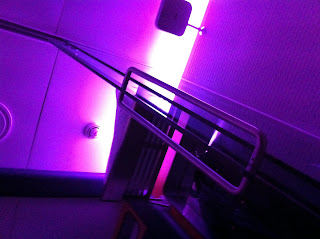I was gathering new entries a few days ago for this 'dictionary of our times' I want to put together at some point. Along with some other issues that shoudn't really belong here such as 'Fame, Industry thereof', 'Greed' (not precisely
Von Stroheim's), 'Marketing mayhem', 'Print on the crack and related fears', etc, one of the entries was as a matter of fact the one in the title of this post. Well Donostia Film Festival should be the right place to find out.

Don't know about the town you live in, but in mine cinemas are currently under siege. Plenty of then have closed down, others seem to be running on automatic pilot with an ever decreasing audience and some of them have already started to screen opera performances or Champions League football games instead of films. Only those which were never particularly successful do actually survive in a rather healthy fashion: small arthouses relying on their faithful alternative audiences (joined by a growing number of say non-alternative moviegoers these days as well - the whole point of attracting spectators is indeed about imagination).
So here we are at the film factory exit door - watching brand new models as they come out, paint still wet on them. And know what? They're as good as they ever were. Take yesterday's survey for example: a fine new outcome from the Eastern Europe film powerhouse (from
Bulgaria this time, but there's another
Rumanian film everyone's talking about which I still didn't have the chance of see) and yet another rock solid
Danish film from Zentropa factories. Many others on the go by the way, only it was just my first day and it was such a sunny one too!
So it's crystal clear now the problem lies not at production stage. The films are there as always were, or even more for the sake of globalisation, which will allow stories from virtually
any part of the world to reach mainstream events such as this one. Filmmakers and producers keep the flame alive with whatever budget they manage to make up (TV networks often providing required scaffold). But difficulties do come up somewhere down the road, presumably both at distribution and exhibition phases. I wouldn't say the situation is critical, but its evolution is indeed very worrying and the issue is not easy to tackle (incidentally: it's not all about film piracy on the web).

So the San Sebastian Festival hosted this EFP all-morning meeting yesterday under title "
European Film Promotion: Promotion and Marketing of European Films Worldwide" for discussing the reasons why "the majority of European films still do not find their way into the cinemas outside of their home territories". Ten independent distributors from ten different European countries were expected to discuss the potential of new technical formats, social community platforms and business models. I wasn't there, shame on me, but exclusive interviews with selected distributors will be published at
cineuropa.org some time in the near future. We should keep an eye on those ones for the meeting outcomes and good ideas on film distribution.




























